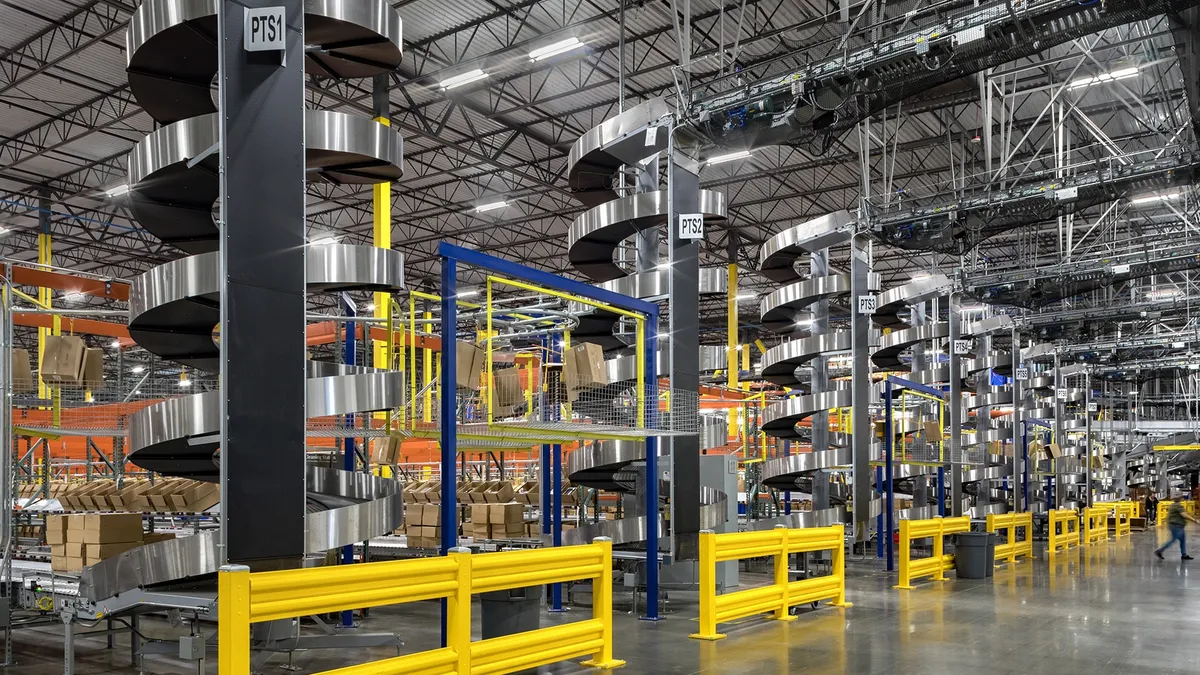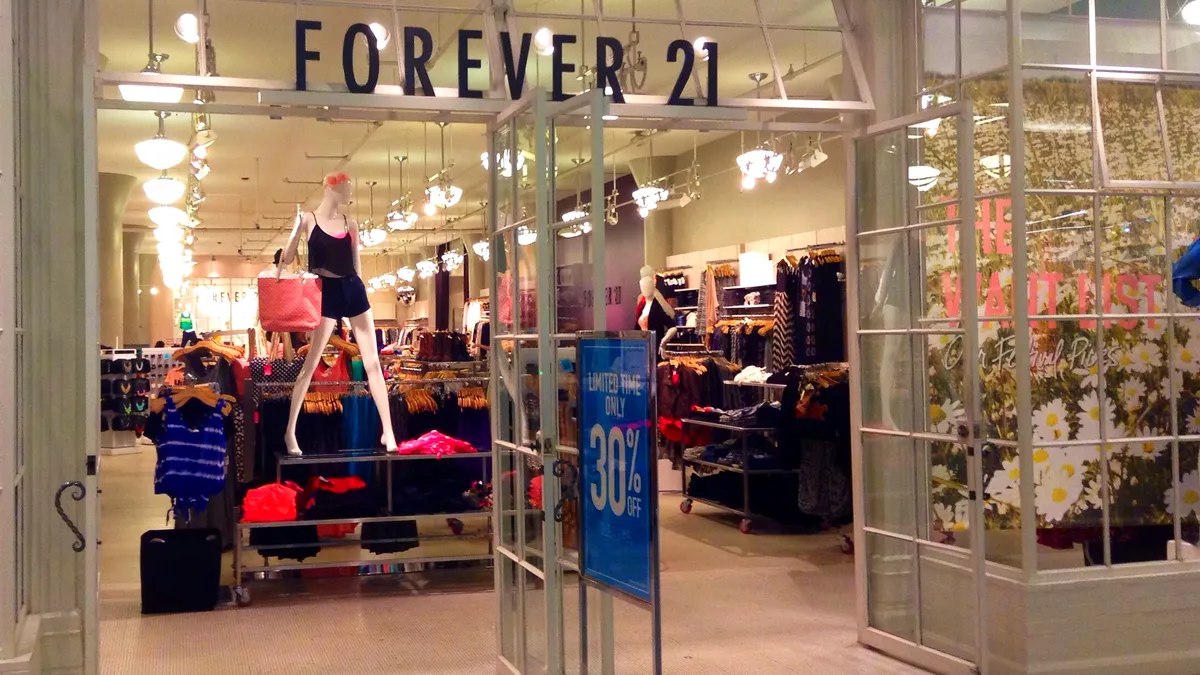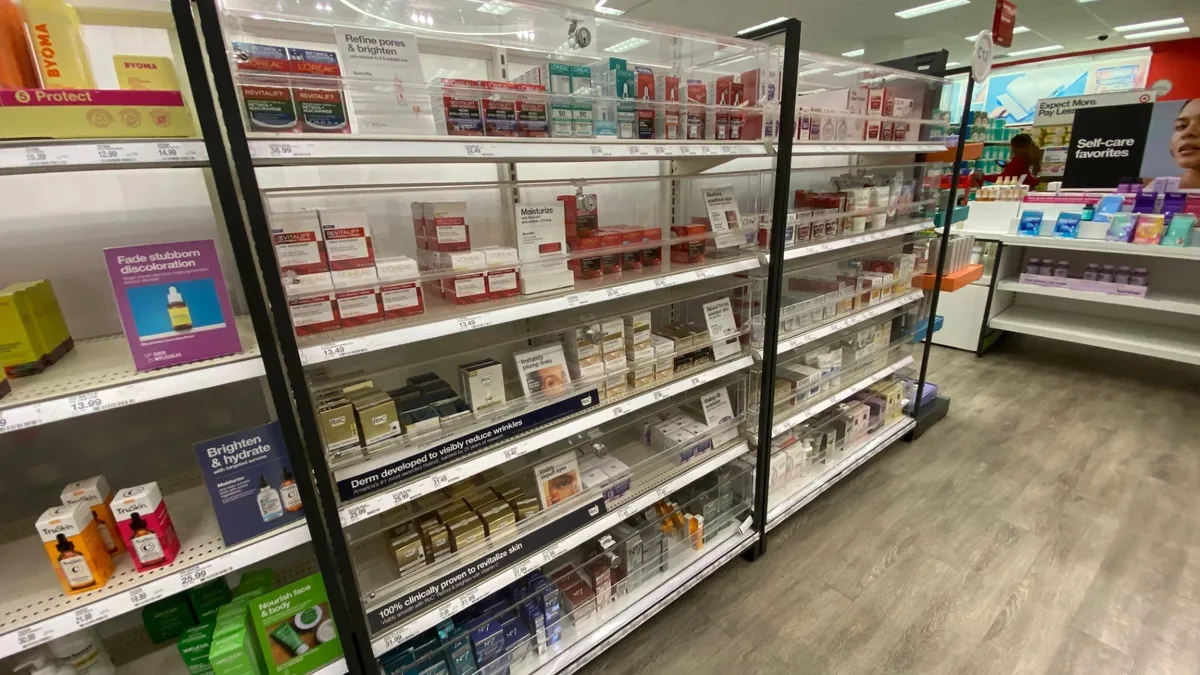When Ulta Beauty began its current supply chain transformation journey in 2021, it wanted to do things differently than its competitors.

Other retailers often build large facilities that may go underutilized throughout the year, but Ulta made a deliberate choice to keep a smaller footprint, Chief Supply Chain Officer Erik Lopez said in an interview with sister publication Supply Chain Dive.
“We took a differentiated approach to say, you know what, we don't want to just build a one-size-fits-all to the network because you know we have growth, but our growth is not just going to be vertical,” Lopez said. “We have a staggered approach and we wanted to have an MFC [market fulfillment center] model.
Once complete, the model will consist of four regional distribution centers, three market fulfillment centers and one “fast” fulfillment center.
“The beauty of the MFC model is it's faster to build, it gets closer, again keeps all of inventory under one roof and we can do it at an easier clip than doing these bigger buildings that involve a lot more capital,” Lopez said.
Regional distribution centers undergo retrofitting
Ulta currently operates three regional distribution centers located in Dallas; Fresno, California; and Greenwood, Indiana. The company will also start construction of a fourth location in 2026 in Chambersburg, Pennsylvania, Lopez said.
To better optimize its regional distribution footprint for an MFC model, the company plans to add new facilities to its network while retrofitting other locations with upgraded automation technology.
The company completed a technology retrofit at its Greenwood facility last year, adding automated receiving systems and residual shuttles, among other upgrades. Next year, it plans to finish a retrofit of its Dallas distribution center by adding similar automation technology, as well as warehouse execution software, Lopez said. The company expects to eventually streamline to a single consistent operating model as it retrofits its other distribution centers.
Lopez said the warehouse execution software will act like “the brains of [Ulta] facilities and controls the flow of goods through its facilities,” Lopez said.
The decision to retrofit facilities wasn’t due to previously used automation technology being substandard, Lopez said. Instead, the company considered the needs of its employees to find ways to provide them with opportunities to upgrade their skills while making processes more efficient.

What Ulta tried to do with the new automation is focus on reducing steps, reducing waste and being less labor intensive, according to Lopez.
Ulta’s ERP connection to market fulfillment centers
In addition to its supply chain transformation, Ulta is also undergoing what it calls Project SOAR, which stands for Strength, Optimize, Accelerate and Renew. The project is a businesswide enterprise resource planning upgrade intended to accelerate and renew its core operations. While supply chain isn’t the main focus of the project, the company is still seeing benefits on that side of the business as a result of the upgrade, Lopez said.
More specifically, the upgrade has helped unlock the foundation of its market fulfillment centers called cross-docking capabilities.
Cross docking allows for minimal or no storage in between loading and transporting an item. For example, products are inventoried and shipped from an inbound origin and directly loaded onto outbound transportation, Lopez said. This allows Ulta products to move from a regional facility to an MFC directly to stores.
“Without the cross-dock functionality, we wouldn't be able to open up the market fulfillment centers and we would be stuck with the one-size distribution center model,” Lopez said.
Compared with its regional distribution centers, which average 650,000 square feet in size, Ulta’s market fulfillment centers are smaller, measuring about 300,000 square feet on average, according to Lopez.
The market fulfillment centers can serve up to 120 stores and 25,000 e-commerce orders per day, Lopez said. They also have a limited assortment of products made up of what the company classifies as its highest moving inventory.
Source: Ulta Beauty
Each facility is equipped with automation technology, including Very Narrow Aisle Pallet Racking, or VNA, which allows for tighter aisles to help gain more capacity. Ulta also uses wire guided routes in these facilities, meaning associates don’t need to train to drive equipment.
“They can just hop in equipment and that wire guided system actually does all the work for them … It's easier to train, easier to onboard and it helps our associates be more efficient,” Lopez said.
Ulta currently has two market fulfillment centers located in Greer, South Carolina, and Bolingbrook, Illinois. In 2026, the company will start construction on a similar facility based in the Pacific Northwest that is expected to open in 2027, Lopez said.
A fast fulfillment center for speedy e-commerce
The third element of Ulta’s microfulfillment model is its “fast” fulfillment center in Jacksonville, Florida.
The center, which only handles e-commerce orders, strengthens Ulta’s ship-from-store method, Lopez said. Initiated in 2019 with a five-store testing phase, Ulta’s ship-from-store program now encompasses more than 500 stores.
In 2018, a fast fulfillment center was expected to be able to fill up to 30,000 orders per day during peak times, increasing Ulta’s network capacity and progressing toward its goal of two-day e-commerce shipping by 2021, former CEO Mary Dillon said during a Q4 2018 earnings call. Today, the facility can serve up to 25,000 orders per day.
Besides wanting things fast, Ulta’s customers want options, Lopez said, particularly when it comes to delivery modes.
The work is all part of the company’s journey to omnichannel fulfillment, which allows it to provide variety to customers, whether that’s to buy online and pick up in store or receive same-day delivery through DoorDash.
Ulta is still in the midst of its supply chain transformation, but it is "constantly looking at ways to evolve and improve our supply chain operations to meet the needs of our guests," Lopez said.























